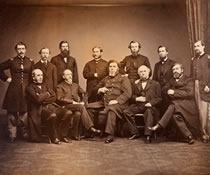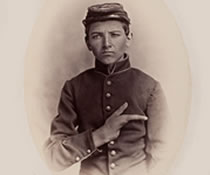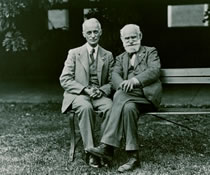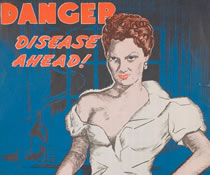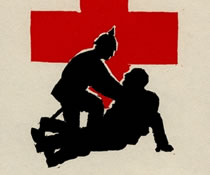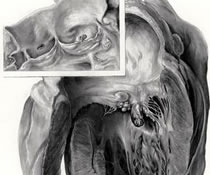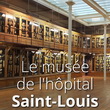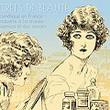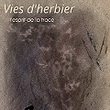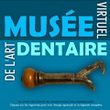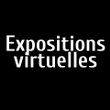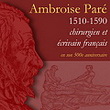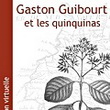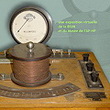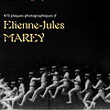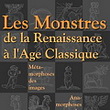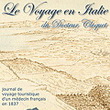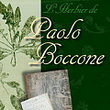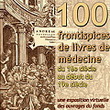Browse by Entry Number 9800–9899
|
Veterinary medicine: An illustrated history.St. Louis, MO: Mosby, 1996.Subjects: VETERINARY MEDICINE › History of Veterinary Medicine |
|
Animals and disease: An introduction to the history of comparative medicine.Cambridge, England: Cambridge University Press, 2005.Subjects: VETERINARY MEDICINE › History of Veterinary Medicine |
|
Dictionary of protopharmacology: Therapeutic practices, 1700-850.Canton, MA: Science History Publications, 1990.Subjects: Dictionaries, Biomedical, PHARMACOLOGY › History of Pharmacology & Pharmaceuticals |
|
A history of nonprescription production regulation.New York: Pharmaceutical Products Press, 2003.History of U.S. regulation of patent medicines,cosmetics, pure food and drugs, homeopathy, dietary supplements, etc. Subjects: PHARMACOLOGY › PHARMACY › History of Pharmacy |
|
A history of online information services 1963-1976.Cambridge, MA: MIT Press, 2003.Pages 197-223 concern "Modern bibliographic control of medical literature." Development of MEDLARS, MEDLARS II, MEDLINE. Subjects: ANATOMY › 19th Century, COMPUTING/MATHEMATICS in Medicine & Biology › History of Computing / Mathematics in Medicine & Biology |
|
Homicidal insanity, 1800-1985.Tuscaloosa & London: University of Alabama Press, 1989."Homicidal insanity has remained a vexation to both the psychiatric and legal professions despite the panorama of scientific and social change during the past 200 years. The predominant opinion today among psychiatrists is that no correlation exists between dangerousness and specific mental disorders. But for generation after generation, psychiatrists have reported cases of insane homicide that were clinically similar. Although psychiatric theory changed and psychiatric nosology was inconsistent, the mental phenomena psychiatrists identified in such cases remained the same. The central thesis of Homicidal Insanity is that as psychiatric theory changed, psychiatrists regarded these phenomena variously as symptoms of mental disease or the disease in itself. It is possible to trace these phenomena throughout the history of Anglo-American psychiatric theory and practice. A secondary thesis of the book is that psychiatrists have used these phenomena as predictors and markers in the practical matters of preventing insane homicide and of testifying in the courts to defend the irresponsible and expose the culpable. "For 200 years, scientific and philosophical disagreement raised controversy and brought the issues to public attention. Still, to this day no rational method exists to discriminate the dangerous from the harmless in matters of involuntary commitment, nor insanity from crime in the courts" (publisher).
Subjects: Forensic Medicine (Legal Medicine) › History of Forensic Medicine , PSYCHIATRY › Forensic Psychiatry, PSYCHIATRY › History of Psychiatry |
|
Medical mycology in the United States: A historical analysis (1894–1996).Dordrecht & Boston: Kluwer Academic Publishers, 2003.Subjects: COUNTRIES, CONTINENTS AND REGIONS › United States , Mycology, Medical |
|
Beredeneerde beschrijving van het Museum Anatomico-Physiologicum van P. de Riemer.Rotterdam: Weduwe J. Allart, 1831.Digital facsimile from Universiteit Utrecht at this link. Subjects: ANATOMY › Cross-Sectional, MUSEUMS › Medical, Anatomical & Pathological |
|
La médecine de guerre en Grèce ancienne.Turnhout, Belgium: Brepols, 2017.The most comprehensive study of this subject. Subjects: ANCIENT MEDICINE › Greece › History of Ancient Medicine in Greece, MILITARY MEDICINE, SURGERY & HYGIENE › History of Military Medicine, WOMEN, Publications by › Years 2000 - |
|
An Old French herbal (Ms Princeton U.L. Garrett 131). Edited by Tony Hunt.Turnhout, Belgium: Brepols, 2009.First edition of the earliest Old French herbal in verse— "a surprisingly comprehensive work (3188 octosyllables), based on an eleventh-century Latin treatise 'De viribus herbarum' attributed to a certain 'Macer'. It occupies a significant place in the development of herbals and is an interesting witness to writing in Western France in the thirteenth century and to the unusual syntax and concentrated style of its author. Some one hundred and twenty-five plants are described together with their medicinal uses, which cover a remarkable range of ailments. For ease of recognition the sections of text which do not seem to be based on the received text of 'Macer' are printed in italics. Quotations from the principal source and from parallels are given in the notes" (publisher). Subjects: MEDIEVAL MEDICINE › France, PHARMACOLOGY › PHARMACEUTICALS › Materia medica / Herbals / Herbal Medicines |
|
Medicina antiqua. Codex Vindobonensis 93. Vienna, Österreichische Nationalbibliothek. Introduction by Peter Murray Jones, commentary by Franz Unterkircher. Manuscripts in Miniature, No. 4.London: Harvey Miller Publishers, 1999.Color reproduction, reduced in size by one-third, of "a compendium of popular Late Antique texts brought together in the 6th century. It contains writings on herbs and materia medica by authors heavily reliant on the works of Pliny and Dioscorides. Of the 50 surviving copies of this influential miscellany produced before the end of the Middle Ages, the present manuscripts is one of the most enticing. Executed in Southern Italy in the first half of the 13th century, it is beautiful illustrated in vibrant body colour with plants, animals and scenes of medical treatments, faithfully drawn after late antique models. The facsimile of the complete manuscript is followed by an essay which sets the manuscript in the context of the history of medicine. Codicological information is also provided and all plants and animals are identified. "The "Herbarius complex," the most widely used of all anthologies on materia medica available in the early Middle Ages, survives in forty-seven manuscripts. Of these, Codex Vindobonensis 93 of the Austrian National Library is the most elaborate and visually striking.... "Cod. Vind. 93 was produced in Italy in the early part of the thirteenth century--exactly at the moment when the Herbarius complex was at the height of its influence, when medical education was spreading, but before translations from Muslim versions of the classical medical tradition began to dominate. It preserves healing lore from the end of the Roman imperial era. Not confined to the physical healing powers of plants, it includes prayers to the earth goddess, directions for making amulets, prescribed rituals for the collection and preparation of herbs, references to mythological heroes, and lists of magical powers, such as calming storms at sea. It dramatizes for us, in Professor Jones's apt phrase, "the curious mixture of fantasy and pragmatism" that shaped late antique and early medieval medical practice (p. 28)" (publisher). Full-size color reproduction: Codices selecti 27.27, Graz: Akademische Druck-u. verlaganstalt,1972.
Subjects: ANCIENT MEDICINE › Late Antiquity, ART & Medicine & Biology, MEDIEVAL MEDICINE › Italy, PHARMACOLOGY › PHARMACEUTICALS › Materia medica / Herbals / Herbal Medicines |
|
The theatre of the body: Staging death and embodying life in early-modern London.Turnhout, Belgium: Brepols, 2009."...The book takes as its specific focus seventeenth-century London, in a significant study encompassing the period from the incorporation of the Worshipful Company of Barber-Surgeons (1540) to the staging of Edward Ravenscroft’s adaptation of a French farce as The Anatomist: or, The Sham Doctor (1696). Cregan is concerned with ‘how practices and subjectivities of modernity began to take hold within and across three fields of expertise’ , three concretely interconnected arenas in London: the dramatic theatre of the playhouses, the anatomy theatre of the Barber-Surgeons, and the exercise of law in the city’s court houses" (http://www.northernrenaissance.org/kate-cregan-the-theatre-of-the-body-staging-death-and-embodying-life-in-early-modern-london-brepols-2009/, accessed 2-2018). Subjects: ANATOMY › History of Anatomy, COUNTRIES, CONTINENTS AND REGIONS › England (United Kingdom), LAW and Medicine & the Life Sciences, LITERATURE / Philosophy & Medicine & Biology, Social or Sociopolitical Histories of Medicine & the Life Sciences |
|
L'Anonyme de Londres. P.: Lit.Lond. 165, Brit.Libr. Inv. 137. Un papyrus médical grec du Ier siècle après J.-C. Edited by Antonio Ricciardetto.Paris: Les Belles Lettres, 2016.Edition of the Greek text with French translation and introduction. Apart from minor changes listed on page vii, the work reproduces the previous publication by the author in the collection Papyrologia Leodensia (Liège, 2014). Subjects: ANCIENT MEDICINE › Greece, ANCIENT MEDICINE › Medical Papyri |
|
Physiognomy and the meaning of expression in nineteenth-century culture.Cambridge, England: Cambridge University Press, 2001."...explores the concepts of physiognomy and eugenics and raises questions about what are "legitimate" sciences.[2] She describes how "the appeal of physiognomy lay not so much in any of its scientific pretension but rather in how it seemed to validate an already widespread cultural conviction" (Wikipedia article on Lucy Hartley, accessed 02-2018).
Subjects: ALTERNATIVE, Complimentary & Pseudomedicine › Physiognomy |
|
The physiognomy of diseases.London: James Nisbet & Co., 1849.Corfe was Resident Medical Officer at London's Middlesex Hospital, Fellow of the Royal College of Physicians of Edinburgh, and author of works on various medical subjects. Digital facsimile from the Internet Archive at this link. Subjects: ALTERNATIVE, Complimentary & Pseudomedicine › Physiognomy |
|
Publishing and medicine in early modern England.Rochester, NY: University of Rochester Press, 2002."This book examines the effects of medical publishing on the momentous theoretical and jurisdictional controversies in health care in early modern England. The simultaneous collapse of medical orthodoxy and the control of medicine in London by the Royal College of Physicians occurred when reform-minded doctors who were trained on the continent, in tandem with surgeons and apothecaries, successfully challenged the professional monopoly held by Oxbridge-educated elites. This work investigates the book trade, the role it played in medicine, and the impact of the debate itself on the public sphere. Chapters analyze the politics and religious preferences of printers and sellers, gender as a factor in medical publishing, and the location of London bookshops, for clues to the business of well-being. Advertisements for remedies and therapeutic skills, the subject of another essay, became commonplace in 17th-century England; moreover, publishers and bookshop owners sometimes held the rights to proprietary medicines, undercutting licensed doctors. The final chapter surveys a variety of medical illustrations and their influence on the relationship between patient and physician. An epilogue considers the English medical scene and the world of print after the famous Rose decision of 1702, when the House of Lords gave apothecaries the legal right to practice medicine, ratifying the reality of a changed marketplace" (publisher). Subjects: COUNTRIES, CONTINENTS AND REGIONS › England (United Kingdom), Publishing / Book History in Medicine and Biology |
|
The royal doctors, 1485-1714: Medical personnel at the Tudor and Stuart courts.Rochester, NY: University of Rochester Press, 2001."... investigates the influential individuals who attended England's most important patients during a pivotal epoch in the evolution of the state and the medical profession. Over three hundred men [and a handful of women], heretofore unexamined as a group, made up the medical staff of the Tudor and Stuart kings and queens of England [as well as the Lord Protectorships of Oliver and Richard Cromwell]. The royal doctors faced enormous challenges in the sixteenth and seventeenth centuries from diseases that respected no rank and threatened the very security of the realm. Moreover, they had to weather political and religious upheavals that led to regicide and revolution, as well as cope with sharp theoretical and jurisdictional divisions within English medicine. The rulers often interceded in medical controversies at the behest of their royal doctors, bringing sovereign authority to bear on the condition of medicine' (publisher). Subjects: COUNTRIES, CONTINENTS AND REGIONS › England (United Kingdom), Social or Sociopolitical Histories of Medicine & the Life Sciences |
|
Fatal thirst: Diabetes in Britain until insulin.Leiden: Brill, 2009.Subjects: COUNTRIES, CONTINENTS AND REGIONS › England (United Kingdom), Metabolism & Metabolic Disorders › Diabetes › History of Diabetes |
|
The graphic medicine manifesto.University Park, PA: Penn State University Press, 2015."...establishes the principles of graphic medicine and begins to map the field. The volume combines scholarly essays by members of the editorial team with previously unpublished visual narratives by Ian Williams and MK Czerwiec, and it includes arresting visual work from a wide range of graphic medicine practitioners. The book’s first section, featuring essays by Scott Smith and Susan Squier, argues that as a new area of scholarship, research on graphic medicine has the potential to challenge the conventional boundaries of academic disciplines, raise questions about their foundations, and reinvigorate literary scholarship—and the notion of the literary text—for a broader audience. The second section, incorporating essays by Michael Green and Kimberly Myers, demonstrates that graphic medicine narratives can engage members of the health professions with literary and visual representations and symbolic practices that offer patients, family members, physicians, and other caregivers new ways to experience and work with the complex challenges of the medical experience. The final section, by Ian Williams and MK Czerwiec, focuses on the practice of creating graphic narratives, iconography, drawing as a social practice, and the nature of comics as visual rhetoric. A conclusion (in comics form) testifies to the diverse and growing graphic medicine community. Two valuable bibliographies guide readers to comics and scholarly works relevant to the field" (publisher). Subjects: GRAPHIC DISPLAY of Medical & Scientific Information, Graphic Medicine |
|
Graphic Medicine. www.graphicmedicine.orgBrighton, England, 2007.Subjects: DIGITAL RESOURCES › Digital Archives & Libraries , Graphic Medicine |
|
Mom's cancer.New York: Abrams Comicarts, 2006.This book was born digital in 2004, and later published in print. See www.momscancer.com. "Winner of the 2005 Eisner Award in the category of Best Digital Comic for the original Web version" "Brian Fies is a freelance journalist whose mother was diagnosed with lung cancer. As he and his two sisters struggled with the effects of her illness and her ongoing recovery from treatment, Brian processed the experience in his journal, which took the form of words and pictures. Subjects: Graphic Medicine, ONCOLOGY & CANCER, Publishing / Book History in Medicine and Biology |
|
Hippocrate, Oeuvres complètes, Tome XVI: Problèmes hippocratiques. Texte établi, traduit et annoté par Jacques Jouanna et Alessia Guardasole. (Collection des universités de France).Paris: Les Belles Lettres, 2017.Greek text with facing French translation of 130 problems (some in the way of Hippocratic medicine and others not) compiled by an anonymous Christian author from the Byzantine period, 7th to 10th/11th century. Subjects: BYZANTINE MEDICINE, Hippocratic Tradition, MEDIEVAL MEDICINE |
|
Bibliografia Hipocrática.Caracas, Venezuela: Ediciones del Rectorado, Universidad central de Venezuela, 1984.Alphabetical bibliography by author's name of all scholars, physicians, and others who studied the Hippocratic Collection and published about it. Entries include a brief biography of the authors, transcription of the full title of their works and, in several cases, photographic reproduction of the title page, some explanatory notes, and references to bibliographies and library catalogues.
Subjects: ANCIENT MEDICINE › Greece, BIBLIOGRAPHY › Bibliographies of Specific Subjects, Hippocratic Tradition |
|
Narrative of the United States Exploring Expedition. During the years 1838, 1839, 1840, 1841, 1842. 5 vols. plus atlas.Philadelphia: Printed by C. Sherman, 1844.The United States Exploring Expedition was the first United States scientific expedition by sea. Wilkes' six ships ranged from Tierra del Fuego, Chile, and Peru, to Samoa, Fiji, Tahiti, Hawaii, Australia, New Zealand, the Philippines, and Singapore. Two of its most notable achievements were the extensive survey of the American northwest coast and the exploration of some 1500 miles of the Antarctic coast, proving the existence of the seventh continent- Antarctica. Equally important, the Expedition collected and described natural history specimens from all parts of the globe - specimens that eventually came to the fledgling Smithsonian Institution, making it the National Museum of the United States. "With the help of the expedition's scientists, derisively called "clam diggers" and "bug catchers" by navy crew members, 280 islands, mostly in the Pacific, were explored, and over 800 miles of Oregon were mapped. Of no less importance, over 60,000 plant and bird specimens were collected. A staggering amount of data and specimens were collected during the expedition, including the seeds of 648 species, which were later traded, planted, and sent throughout the country. Dried specimens were sent to the National Herbarium, now a part of the Smithsonian Institution. There were also 254 live plants, which mostly came from the home stretch of the journey, that were placed in a newly constructed greenhouse in 1850, which later became the United States Botanic Garden" (Wikipedia article on United States Exploring Expedition, accessed 02-2018). The official edition was limited to 100 copies. However, Wilkes, secured copyright for his Narrative of the expedition, under which privilege he published several editions of that part of the reports. Later, also, the authors themselves, or publishers who were willing to undertake it, were allowed to issue an additional 150 copies of the various reports, and under this arrangement, from 100 to 150 copies of most of the volumes were published in addition to the 100 copies provided for under act of Congress of Aug. 26, 1842, which provided: "That there shall be published ... an account of the discoveries made by the Exploring Expedition under the command of Lieutenant Wilkes ... which account shall be ... published in a form similar to the voyage of the Astrolabe, lately published by the government of France." Digital facsimiles of the 1845 printing of the Narrative plus all the remaining supplementary scientific volumes (23 vols. in all, completed in 1874) from the Biodiversity Heritage Library at this link.
Subjects: NATURAL HISTORY, VOYAGES & Travels by Physicians, Surgeons & Scientists |
|
The United States Exploring Expedition and its publications, 1844–1874: A bibliographyNew York: New York Public Library, 1942.Reprinted with additions and corrections from the Bulletin of the New York Public Library of February 1940 and January, July and October 1941. Subjects: BIBLIOGRAPHY › Bibliographies of Natural History, VOYAGES & Travels by Physicians, Surgeons & Scientists › History of Voyages & Travels by Physicians.... |
|
Expeditions & discoveries: Sponsored exploration and scientific discovery in the modern age.Cambridge, MA: Harvard University Library, 2002.http://ocp.hul.harvard.edu/expeditions/index.html "The fourth in a series of online collections from Harvard University, Expeditions and Discoveries delivers maps, photographs, and published materials, as well as field notes, letters, and a unique range of manuscript materials on selected expeditions between 1626 and 1953.... "In the 19th and 20th centuries, Harvard University played a significant role—as underwriter, participant, collector, and repository—for pace-setting expeditions around the world. For Internet users, Expeditions and Discoveries provides selective access to Harvard’s multidisciplinary records of those expeditions. "Created by the Harvard University Library’s Open Collections Program, Expeditions and Discoveries offers important—often unique—historical resources for students of anthropology, archaeology, astronomy, botany, geography, geology, medicine, oceanography, and zoology. "The collection features nine major expeditions as they are reflected in the holdings of Harvard’s libraries, museums, and archives. Other materials—both published and unpublished—provide vital, contextual information on exploration in the modern age. "In addition, users can search or browse materials by discipline or region, explore holdings related to 22 notable people, and find vital, contextual information on modern-age explorations from the Arctic to the Antarctic, from South America to Africa and Australia, and more."
Subjects: DIGITAL RESOURCES › Digital Archives & Libraries , VOYAGES & Travels by Physicians, Surgeons & Scientists |
|
Smithsonian Libraries: Digital Library: Natural and physical sciences.Washington, DC: Smithsonian Institution, circa 2000.https://library.si.edu/digital-library/natural-and-physical-sciences "About Our Collections "The Libraries' physical collections comprise 1.5 million books and manuscripts, along with over 400,000 pieces of ephemera, microfilm, photo collections and a/v material, housed in over 20 locations in Washington, Maryland, New York, and Panama. Some of those collections are available via inter-library loan request through your local public, school, or organizational library. If you're with an organization interested in using one of our collections items in an exhibition, please see Exhibition Loan Services. "Our digital collections include over 27,000 digitized books and manuscripts (available on our site and at the Biodiversity Heritage Library) as well as photo and illustration collections, seed catalogs, trade literature, and much more."
Subjects: DIGITAL RESOURCES › Digital Archives & Libraries , NATURAL HISTORY, NATURAL HISTORY › Art & Natural History, VOYAGES & Travels by Physicians, Surgeons & Scientists |
|
Exploration and empire: The explorer and the scientist in the winning of the American West.New York: Alfred A. Knopf, 1966.Subjects: COUNTRIES, CONTINENTS AND REGIONS › United States , COUNTRIES, CONTINENTS AND REGIONS › United States › American West, VOYAGES & Travels by Physicians, Surgeons & Scientists › History of Voyages & Travels by Physicians.... |
|
Taking turns: Stories from HIV/AIDS Care Unit 371.University Park, PA: Penn State University Press, 2017."In 1994, at the height of the AIDS epidemic in the United States, MK Czerwiec took her first nursing job, at Illinois Masonic Medical Center in Chicago, as part of the caregiving staff of HIV/AIDS Care Unit 371. Taking Turns pulls back the curtain on life in the ward. "A shining example of excellence in the treatment and care of patients, Unit 371 was a community for thousands of patients and families affected by HIV and AIDS and the people who cared for them. This graphic novel combines Czerwiec’s memories with the oral histories of patients, family members, and staff. It depicts life and death in the ward, the ways the unit affected and informed those who passed through it, and how many look back on their time there today. Czerwiec joined Unit 371 at a pivotal time in the history of AIDS: deaths from the syndrome in the Midwest peaked in 1995 and then dropped drastically in the following years, with the release of antiretroviral protease inhibitors. This positive turn of events led to a decline in patient populations and, ultimately, to the closure of Unit 371" (publisher). Subjects: Graphic Medicine, INFECTIOUS DISEASE › HIV / AIDS › History of HIV / AIDS |
|
The great paleolithic war: How science forged an understanding of America's ice age past.Chicago, IL: University of Chicago Press, 2015.A masterful synthesis of the history of the study of human origins in North America with a comprehensive bibliography. Subjects: COUNTRIES, CONTINENTS AND REGIONS › United States , EVOLUTION › Human Origins / Human Evolution › History of |
|
A history of total health.Oakland, CA: Kaiser Permanente, 2009.https://kaiserpermanentehistory.org/ "A History of Total Health invites you to join in a discussion of today’s health care as we draw links to relevant events in the history of Kaiser Permanente and the industrial constellation under Henry J. Kaiser. "The blog takes its name from Kaiser Permanente founding physician Sidney R. Garfield’s last research project “Total Health” which sought to understand and treat the body, mind, and spirit of our members. "Throughout his career, Garfield (1906-1984) wanted to build a system of care that focused on keeping people healthy in addition to caring for them when they get sick. His ideas resonated with industrialist Henry J. Kaiser (1882-1967) who was “greatly restless and restlessly great” for a new health care system. Together they founded Kaiser Permanente for the employees of Kaiser Industries in 1942, and opened the health plan to the public on July 21, 1945." Subjects: DIGITAL RESOURCES › Digital Archives & Libraries , Insurance, Health › History of Health Insurance, Managed Care |
|
Multiphasic health testing services.New York: Wiley, 1978.'In 1968 Morris F. Collen, MD and his team at KP’s Medical Methods Research (MMR) built a medical information system that peers described in the era as the most advanced of its kind. It was an aspiration of medical informaticians throughout the country, and KP was uniquely qualified to deliver on the promise. "In 1963 the MMR team used an IBM 1440 computer to store patient clinical data collected in a discrete unit involved in the early detection of disease. The fledgling information system designed for the multiphasic screening exam stored patient identification data, physician examination and patient history data, lab results, and EKG and X-ray interpretations. Programmed rules and algorithms alerted physicians to diagnostic results that fell outside of normal limits. Patient histories were accessible to physicians for comparison study throughout the life of the patient. The system also advanced epidemiological research and evidence-based protocols. "With this as a starting point, MMR aspired to design a comprehensive information system with the patient record at its core and with ancillary subsystems for the storage of pharmacy and lab pathology data; administrative information (patient identification / account services); and hospital information (admissions, bed utilization, inventories). With computing ability to store and retrieve pertinent data amassed over years, the design called for real-time reporting and 24/7 communication of essential medical data at all points of service, with robust security protocols to protect member confidentiality. "By 1969 system design had matured and the National Center for Health Services Research and Development Agency funded a five-year pilot implementation at the San Francisco Kaiser Foundation hospital and medical offices. 'Within four years the San Francisco Kaiser Foundation hospital and physician offices were recording and storing patient registration data and physician diagnoses from 13 outpatient clinics for 2000 visits daily in its medical, surgical, pediatric and obstetrical clinics. Pharmacists in the outpatient pharmacies entered 1,200 prescriptions daily into the appropriate electronic patient records. A clinical laboratory subsystem handled data for 3,000 daily lab tests. Electrocardiogram, pathology and radiology reports were recorded via IBM magnetic tape-selectric typewriters. All systems data was fed via phone data line from a Honeywell mini-computer on-site in San Francisco to the central IBM computer in Oakland. "Though the project terminated in 1973 when the granting agency went out of existence informaticians viewed the KP San Francisco integrated system as a milestone achievement in medical information systems" (http://www.clinfowiki.org/wiki/index.php/Multiphasic_Health_Testing_System_(MHTS), accessed 02-2018).
Subjects: COMPUTING/MATHEMATICS in Medicine & Biology, Managed Care |
|
Socialized medicine in the Soviet Union.New York: W. W. Norton and Company, 1937."... Sigerist was influential in the creation of socialized medicine in Canada. He made four trips to Canada in the 1930s and 1940s at the invitation of various medical groups to speak on this topic. Under his influence, Saskatchewan introduced state-funded medical and hospital care for pensioners, people on welfare and cancer patients after being hired to write a report in 1944 by Tommy Douglas the socialist Premier of that Canadian province. This was the basis for the eventual adoption of government funded health care in all of Canada" (Wikipedia article on Henry Sigerist, accessed 02-2018). Subjects: COUNTRIES, CONTINENTS AND REGIONS › Russia, Insurance, Health, Social or Sociopolitical Histories of Medicine & the Life Sciences |
|
Engravings, explaining the anatomy of the bones, muscles and joints.Edinburgh: John Patterson for Bell & Bradfute, 1794.Bell’s atlas of the bones, muscles and joints was issued as a separate work a year after his text, The Anatomy of the Bones, Muscles, and Joints. Bell’s illustrations are some of the most striking in the entire literature. “Certainly they have the immediacy of drawings made in the dissecting rooms of late Georgian Edinburgh. Some are quite gruesome and even perverted . . . In their context, however, they are admirable, for they were intended to be used to supplement the teacher’s demonstrations, to remind the student of what he had seen, and to be a guide when the student sat down with the prosected material. It was under the Bells . . . that the extramural schools brought the aspiring surgeon much closer to the cadaver, allowing the student opportunities for actual dissection” (Roberts & Tomlinson, The Fabric of the Body [1992] 491). Subjects: ANATOMY › Anatomical Illustration, ART & Medicine & Biology |
|
Suda On Line: Byzantine lexicography.1998 – 2014."In 1998 the Stoa Consortium for Electronic Publication in the Humanities organized by Ross Scaife sponsored the online collaborative annotated first English translation of the massive Byzantine encyclopedia, The Suda — Suda On Line: Byzantine Lexicography. This online collaboration predated the Wikipedia, which began in 2001. Sixteen years later, on August 8, 2014 the Managing Editors of of the project announced from the website of The Stoa Consortium that all of the more than 31,000 entries in the Suda were translated into English and "vetted": "The Managing Editors of the Suda On Line are pleased to announce that a translation of the last of the >31,000 entries in the Suda was recently submitted to the SOL database and vetted. This means that the first English translation of the entire Suda lexicon (a vitally important source for Classical and Byzantine studies), as well as the first continuous commentary on the Suda’s contents in any language, is now searchable and browsable through our on-line database (http://www.stoa.org/so). Subjects: BIOGRAPHY (Reference Works), BYZANTINE MEDICINE, Byzantine Zoology, DIGITAL RESOURCES › Digital Collaborations Online (Wikis), Encyclopedias |
|
Perseus Digital Library. Gregory R. Crane, Editor-in-Chief.Medford/Sommerville, MA: Tufts University, 1985.http://www.perseus.tufts.edu/hopper/ "The Perseus Digital Library Project began at Tufts University, Medford/Somerville, Massachusetts in 1985. Though the project was ostensibly about Greek and Roman literature and culture, it evolved into an exploration of the ways that digital collections could enhance scholarship with new research tools that took libraries and scholarship beyond the physical book. The following quote came from their website around 2010: "Since planning began in 1985, the Perseus Digital Library Project has explored what happens when libraries move online. Two decades later, as new forms of publication emerge and millions of books become digital, this question is more pressing than ever. Perseus is a practical experiment in which we explore possibilities and challenges of digital collections in a networked world. "Our flagship collection, under development since 1987, covers the history, literature and culture of the Greco-Roman world. We are applying what we have learned from Classics to other subjects within the humanities and beyond. We have studied many problems over the past two decades, but our current research centers on personalization: organizing what you see to meet your needs. "We collect texts, images, datasets and other primary materials. We assemble and carefully structure encyclopedias, maps, grammars, dictionaries and other reference works. At present, 1.1 million manually created and 30 million automatically generated links connect the 100 million words and 75,000 images in the core Perseus collections. 850,000 reference articles provide background on 450,000 people, places, organizations, dictionary definitions, grammatical functions and other topics." In December 2013 I found this description of their activities on their website: "Perseus has a particular focus upon the Greco-Roman world and upon classical Greek and Latin, but the larger mission provides the distant, but fixed star by which we have charted our path for over two decades. Early modern English, the American Civil War, the History and Topography of London, the History of Mechanics, automatic identification and glossing of technical language in scientific documents, customized reading support for Arabic language, and other projects that we have undertaken allow us to maintain a broader focus and to demonstrate the commonalities between Classics and other disciplines in the humanities and beyond. At a deeper level, collaborations with colleagues outside of classical studies make good on the claim that a classical education generally provides those critical skills and that intellectual adaptability that we claim to instill in our students. We offer the combination of classical and non-classical projects that we pursue as one answer to those who worry that a classical education will leave them or their children with narrow, idiosyncratic skills. "Within this larger mission, we focus on three categories of access: Human readable information: digitized images of objects, places, inscriptions, and printed pages, geographic information, and other digital representations of objects and spaces. This layer of functionality allows us to call up information relevant to a longitude and latitude coordinate or a library call number. In this stage digital representations provide direct access to the physical senses of actual people in particular places and times. In some cases (such as high resolution, multi-spectral imaging), digital sources already provide better physical access than has ever been feasible when human beings had direct contact with the physical artifact. "Machine actionable knowledge: catalogue records, encyclopedia articles, lexicon entries, and other structured information sources. Physical access can serve our senses but provides no information about what we are encountering - in effect, physical access is like visiting a historical site about which we may know nothing and where any visible documentation is in a language that we cannot understand. Machine actionable knowledge allows us to retrieve information about what we are viewing. Thus, if we encounter a page from a Greek manuscript of Homer, we could at this stage find cleanly printed modern editions of the Greek, modern language translations, commentaries and other background information about the passage on that manuscript page. If we moved through a virtual Acropolis, we could retrieve background information about the buildings and the sculpture. "Machine generated knowledge: By analyzing existing information automated systems can produce new knowledge. Machine actionable knowledge allows, for example, us to look up a dictionary entry (e.g., facio, "to do, make") in a dictionary or to find pre-existing translations for a passage in Latin or Greek. Machine generated knowledge allows a machine to recognize that fecisset is a pluperfect subjunctive form of facio and to provide reading support where there is no pre-existing human translation. Such reading support might include full machine translation but also finer grained services such as word and phrase translation (e.g., recognizing whetherorationes in a given context more likely corresponds to English "speeches," "prayers" or some other term), syntactic analysis (e.g., recognizing that orationes in a given passage is the object of a given verb), named entity identification (e.g., identifying Antonium in a given passage as a personal name and then as a reference to Antonius the triumvir) " (http://historyofinformation.com/expanded.php?id=1238, accessed 02-2018). Subjects: ANCIENT MEDICINE › Greece, ANCIENT MEDICINE › Roman Empire, DIGITAL RESOURCES › Digital Archives & Libraries |
|
OnView: Curated content from the Center for the History of Medicine's extraordinary collections. The Francis A. Countway Library of Medicine: An alliance of the Boston Medical Library and Harvard Medical School.Boston, MA: Francis A. Countway Library of Medicine, 2004.http://collections.countway.harvard.edu/onview/collection-tree
Subjects: DIGITAL RESOURCES › Digital Archives & Libraries , U.S.: CONTENT OF PUBLICATIONS BY STATE & TERRITORY › Massachusetts |
|
Center for the History of Medicine at Countway Library: BlogBoston, MA: Francis A. Countway Library of Medicine, 2009.https://cms.www.countway.harvard.edu/wp/?page_id=2 Of all the blogs produced by history of medicine departments at university libraries that I had seen in February 2018 this appeared to be one of the most active.
Subjects: DIGITAL RESOURCES › Blogs |
|
History of Psychiatry. 1-Sage Journals, 1990.Subjects: Periodicals Specializing in the History of Medicine & the Life Sciences |
|
Digitized Collections: Cushing/Whitney Medical LibraryNew Haven, CT: Cushing/Whitney Medical Library, 2012.Subjects: DIGITAL RESOURCES › Digital Archives & Libraries |
|
Bibliothèque interuniversitaire de Santé, Paris: Université Paris Descartes. Guy Cobolet, Curator General.Paris: Bibliotheque interuniversitaire de Santé, 2011.http://www.biusante.parisdescartes.fr/histoire/index.php One of the most comprehensive portals and digital libraries for the history of medicine and dentistry. History of health Digital librariesCatalogsBibliographical resourceseditionsServicesConnectionsCatalogs of other librariesNational Library of France - National Academy of Medicine - National Library of Medicine - IndexCat- Wellcome Library
 Other digital librariesOther image banksPartner sitesSubjects: DIGITAL RESOURCES › Digital Archives & Libraries |
|
Digital Bodeian. Judith Siefring, Head of Digital Research.Oxford: Bodleian Library, 2011.https://digital.bodleian.ox.ac.uk/ "The Bodleian Libraries’ collections are extraordinary and significant—both from a scholarly point of view and as material that has an historic and aesthetic richness that holds value for non-academic users. Each year the Libraries serve more than 65,000 readers, over 40% of them from beyond the University, while its critically-acclaimed exhibitions attract almost 100,000 visitors annually. In an effort to make portions of our collections open to a wide variety of users from around the world for learning, teaching and research, the Bodleian Libraries have been digitizing library content for nearly twenty years. The result is over 650,000 freely available digital objects and almost another 1 million images awaiting release. Like many academic libraries, though, our freely available digital collections have been placed online in project-driven websites, with content stored in discrete ‘silos’, each with their own metadata format, different user interfaces, and no common search interface enabling users to discover content or navigate across collections. Some of our collections are linked at portal pages, but each collection remains, with a few exceptions, isolated and difficult to search. In addition, only a few collections offer a machine-readable interface, or any way to link their data with similar data in other Bodleian collections, or with collections at other institutions. Digital.Bodleian aims to solve these problems by:
All of these tasks have been carried out using standards-compliant file formats and methods and with a view to future expansion, scalability and robustness. The Digital.Bodleian project was initially funded by the JISC as part of the Resource Discovery programme, and began in November 2011" (https://digital.bodleian.ox.ac.uk/about.html). Subjects: DIGITAL RESOURCES › Digital Archives & Libraries |
|
Archives and manuscripts at the Bodleian Library.Oxford: Bodleian Library, 2008.http://blogs.bodleian.ox.ac.uk/archivesandmanuscripts/ "The collections held in the Western Manuscripts section of the Bodleian Libraries are a vast treasure house of historical records and literary papers from all periods and from across the globe. The purpose of this particular blog is to highlight aspects of the post-medieval historical collections: to share interesting discoveries made during the course of cataloguing or answering enquiries, and to ask for opinions from our users about ‘problem’ items that turn up from time to time. The complexity and extent of archives and manuscripts acquired over 400 years means that there is still a great deal to be discovered among the historical collections that has never found its way into the Bodleian’s catalogues, let alone into the history books. Further information on the Bodleian’s post-medieval historical archive and manuscript collections: Subjects: DIGITAL RESOURCES, DIGITAL RESOURCES › Blogs |
|
Library of Congress Digital Collections.Washington, DC: U.S. Library of Congress, 1998.https://www.loc.gov/collections/ In February 2018 the Library of Congress offered 316 different digital collections:
Subjects: DIGITAL RESOURCES › Digital Archives & Libraries |
|
The Royal Society: The Repository.London: The Royal Society, 2010.https://blogs.royalsociety.org/history-of-science "INCIPIT "Hello and welcome to the Centre for History of Science. We look after the Royal Society’s amazing collections of archives, rare books, pictures and artefacts. Tracing the development of science through the ages provides a fascinating insight into the most cutting-edge developments of today, and we are proud to be able to facilitate this. This blog will feature posts from the librarians, archivists and curators who run the Centre, and from a handful of our researchers and other supporters too. We intend to show you all kinds of treasures from our collections, provide some insights into how we do things, and hopefully tell you a few things you didn’t already know" (https://blogs.royalsociety.org/history-of-science/2010/07/26/incipit/).
Subjects: DIGITAL RESOURCES › Blogs |
|
Sudden death: Medicine and religion in eighteenth-century Rome.London: Routledge, 2014."In 1705-1706, during the War of the Spanish Succession and two years after a devastating earthquake, an ’epidemic’ of mysterious sudden deaths terrorized Rome. In early modern society, a sudden death was perceived as a mala mors because it threatened the victim’s salvation by hindering repentance and last confession. Special masses were celebrated to implore God’s clemency and Pope Clement XI ordered his personal physician, Giovanni Maria Lancisi, to perform a series of dissections in the university anatomical theatre in order to discover the 'true causes' of the deadly events. It was the first investigation of this kind ever to take place for a condition which was not contagious. The book that Lancisi published on this topic, De subitaneis mortibus (’On Sudden Deaths’, 1707), is one of the earliest modern scientific investigations of death; it was not only an accomplished example of mechanical philosophy as applied to the life sciences in eighteenth-century Europe, but also heralded a new pathological anatomy (traditionally associated with Giambattista Morgagni). Moreover, Lancisi’s tract and the whole affair of the sudden deaths in Rome marked a significant break in the traditional attitude towards dying, introducing a more active approach that would later develop into the practice of resuscitation medicine. Sudden Death explores how a new scientific interpretation of death and a new attitude towards dying first came into being, breaking free from the Hippocratic tradition, which regarded death as the obvious limit of physician’s capacity, and leading the way to a belief in the 'conquest of death' by medicine which remains in force to this day" (publisher). Subjects: CARDIOLOGY › History of Cardiology, COUNTRIES, CONTINENTS AND REGIONS › Italy, RELIGION & Medicine & the Life Sciences |
|
Erwin Bälz: Das Leben eines deutschen Arztes im erwachenden Japan. Tagebücher, Briefe, Berichte hrsg. von Toku Bälz.Stuttgart: J. Engelhorne , 1930.Bälz was personal physician to the Japanese Imperial Family and cofounder of modern western medicine in Japan. "Bälz taught more than 800 students in Western medicine during his tenure at the Tokyo Imperial University. During his stay in Japan, he treated some of the most influential men in the Meiji government, including Prime Ministers Itō Hirobumi and Yamagata Aritomo. On Bälz' initiative, the volcanic springs of Kusatsu (200 km away from Tokyo) were transformed into the most successful hot spring resort of Japan. He compared the area with the European spa resort of Karlsbad, and felt that mountainous air, as well as the clear waters, was very conducive to health" (Wikipedia article on Erwin Bälz, accessed 02-2018). Translated from the German by Eden and Cedar Paul as Awakening Japan: the diary of a German doctor: Erwin Baelz (New York: Viking Press, 1932). Subjects: COUNTRIES, CONTINENTS AND REGIONS › Japan, Education, Biomedical, & Biomedical Profession, Japanese Medicine › History of Japanese Medicine |
|
De guaiaci medicina et morbo gallico liber unus.Mainz: J. Scheffer, 1519.The German scholar, poet, satirist and reformer von Hutten issued a remarkably widely published and influential account of his suffering from syphilis and his treatment with gum from Guaiacum wood. This is considered one of the first patient narratives. The tract was translated into German, French, and English, and often reprinted. The first English translation was Of the Wood Called Guaiacum, that healeth the frenche pockes, and also helpeth the goute in the feete, the stone, palsey, lepre, dropsy, fallyinge euyll, and other diseses (London, 1540). Digital facsimile of the 1519 edition from Google Books at this link. Lewis Jillings, "The aggression of the cured syphilitic: Ulrich von Hutten's projection of his disease as metaphor," The German Quarterly, 68 (1995) 1-18. Subjects: INFECTIOUS DISEASE › SEXUALLY TRANSMITTED DISEASES › Syphilis, PHARMACOLOGY › PHARMACEUTICALS › Materia medica / Herbals / Herbal Medicines |
|
Soma: Divine mushroom of immortality.The Hague: Mouton, 1968.Ethnomycologist and banker Wasson provided evidence for the important role that hallucinogenic mushrooms - in particular the ubiquitous mushroom Amanita muscaria (fly agaric) - play in various ancient and modern cultures. The first edition was limited to 680 copies finely printed at the Stamperia Valdonegga in Verona. Digital facsimile of the trade edition issued by Harcourt Brace Jovanovich from the Internet Archive at this link. Subjects: BOTANY › Cryptogams › Mycology › Ethnomycology, Mycology, Medical, PHARMACOLOGY › Ethnopharmacology, PSYCHIATRY › Psychopharmacology |
|
Visualizing disease: The art and history of pathological illustrations.Chicago, IL: University of Chicago Press, 2017.Subjects: PATHOLOGY › History of Pathology, PATHOLOGY › Pathology Illustration |
|
Dialysis: History, development and promise. Edited by Todd S. Ing, Mohamed Rahman, and Carl M. Kjellstrand.Singapore & Hackensack, NJ: World Scientific Publishing Co., 2012.Subjects: NEPHROLOGY › History of Nephrology |
|
A history of experimental virology. Translated by Elvira Reckendorf.Berlin & Heidelberg: Springer, 1991.Subjects: VIROLOGY › History of Virology |
|
Literature and medicine, future tense: Making it graphic.Literature and Medicine, 27, 124-52., Baltimore, MD: The Johns Hopkins University Press, 2008.A relatively early discussion of the principles of graphic medicine. Available from obermann.uiowa.edu at this link. Subjects: Graphic Medicine |
|
Medical visions: Producing the patient through film, television, and imaging technologies.New York & Oxford: Oxford University Press, 2013."Kirsten Ostherr focuses on moving images produced in the United States from the early twentieth century to the present day. The types of images she considers are diverse and range from sober education films to television documentaries and fictionalized accounts of medical life. She also considers briefly at the end of the book more recent forms, including “reality” television and such virtual worlds as Second Life. The core of Medical Visions consists of six case studies, arranged in chronological order, that include close readings of specific films and programs. Ostherr is alert to the texts’ ideological dimensions as well as their aesthetic properties, often showing the close relationships between visual techniques associated with cinema and those deployed in medical contexts. The volume is rich in detail about the conditions under which works were made and received; especially telling are the ways in which medical organizations attempted to, and often succeeded in, controlling content and audiences" (https://muse.jhu.edu/article/548082, accessed 02-2018).
Subjects: Graphic Medicine, IMAGING › Cinematography, IMAGING › Photography / Photomicrography , LITERATURE / Philosophy & Medicine & Biology |
|
Magnificent voyagers: The U. S. Exploring Expedition, 1838-1842. Edited by Herman J. Viola and Carolyn Margolis.Washington, DC: Smithsonian Institution Press, 1985.Subjects: VOYAGES & Travels by Physicians, Surgeons & Scientists › History of Voyages & Travels by Physicians.... |
|
The Birth of Nuclear Medicine Instrumentation: Blumgart and Yens, 1925.Journal of Nuclear Medicine, 44, 1362-1365., 2003.Available online at http://jnm.snmjournals.org/content/44/8/1362.long.
Subjects: Nuclear Medicine |
|
Remedies and rituals: Folk medicine in Norway and the new land.St. Paul, MN: Minnesota Historical Society Press, 2007.Subjects: COUNTRIES, CONTINENTS AND REGIONS › Norway, TRADITIONAL, Folk or Indigenous Medicine |
|
Landmark papers in nephrology. Edited by John Freehally, Christopher McIntyre and J. Stewart Cameron.Oxford: Oxford University Press, 2013.Subjects: NEPHROLOGY › History of Nephrology |
|
A history of the treatment of renal failure by dialysis.Oxford: Oxford University Press, 2002.Subjects: NEPHROLOGY › History of Nephrology |
|
Yellow Fever and Public Health in the New South.Lexington, KY: University Press of Kentucky, 2015."The public health movement in the South began in the wake of a yellow fever epidemic that devastated the lower Mississippi Valley in 1878--a disaster that caused 20,000 deaths and financial losses of nearly $200 million... "At the national level, southern congressional leaders fought to establish a strong federal health agency, but they were defeated by the young American Public Health Association, which defended states' rights. Local responses and results were mixed. In New Orleans, business and professional men, reacting to the denunciation of the city as the nation's pesthole, organized in 1879 to improve drainage, garbage disposal, and water supplies through voluntary subscription. Their achievements were of necessity modest. "In Memphis--the city hardest hit by the epidemic--a new municipal government in 1879 helped form the first regional health organization and during the 1880s led the nation in sanitary improvements. In Atlanta, though it largely escaped the epidemic, the Constitution and some citizens called for health reform. Ironically their voices were drowned out by ritual invocation of local health mythology and by unabashed exploitation of the stigma of pestilence attached to New Orleans and Memphis. By 1890 Atlanta rivaled Charleston and Richmond for primacy in black mortality rates" (publisher) Subjects: COUNTRIES, CONTINENTS AND REGIONS › United States › American South, INFECTIOUS DISEASE › VECTOR-BORNE DISEASES › Mosquito-Borne Diseases › Yellow Fever › History of Yellow Fever, PUBLIC HEALTH › History of Public Health |
|
The case books of Dr. John Snow. Edited by Richard H. Ellis.London: The Wellcome Institute for the History of Medicine, 1994.Subjects: ANESTHESIA |
|
Plants and empire: Colonial bioprospecting in the Atlantic world.Cambridge, MA: Harvard University Library, 2004.Subjects: BOTANY › History of Botany, VOYAGES & Travels by Physicians, Surgeons & Scientists › History of Voyages & Travels by Physicians.... |
|
Secret cures of slaves: People, plants, and medicine in the eighteenth-century Atlantic world.Stanford, CA: Stanford University Press, 2017."Massive mortality among enslaved Africans and European planters, soldiers, and sailors fueled the search for new healing techniques. Amerindian, African, and European knowledges competed to cure diseases emerging from the collision of peoples on newly established, often poorly supplied, plantations. But not all knowledge was equal. Highlighting the violence and fear endemic to colonial struggles, Schiebinger explores aspects of African medicine that were not put to the test, such as Obeah and vodou. This book analyzes how and why specific knowledges were blocked, discredited, or held secret" (publisher). Subjects: BLACK PEOPLE & MEDICINE & BIOLOGY › History of Black People & Medicine & Biology, BOTANY › Ethnobotany, PHARMACOLOGY › PHARMACEUTICALS › Materia medica / Herbals / Herbal Medicines › History of Materia Medica |
|
En nyttelig laegebog for fattige og rige, unge og gamle.Malmø, Sweden, 1533.Pedersen, a Danish canon, humanist scholar, writer, printer and publisher, wrote and published the earliest medical book issued in Scandanavia by a Scandanavian writer. Translated as "A useful doctor book for poor and rich, young and old," Pedersen's book would be characterized as folk or popular medicine, inspired by Dioscorides. When he published this book Malmø was a Danish city. Subjects: BOTANY › Ethnobotany, COUNTRIES, CONTINENTS AND REGIONS › Denmark, COUNTRIES, CONTINENTS AND REGIONS › Sweden, PHARMACOLOGY › PHARMACEUTICALS › Materia medica / Herbals / Herbal Medicines, TRADITIONAL, Folk or Indigenous Medicine |
|
Om UrteVand.Malmø, Sweden, 1534.Petersen issued a second book, "On herbal extracts" in 1534. According to Stokker, Remedies and rituals: Folk medicine in Norway and the new land (2007) p. 111, Pedersen's two works together contained "250 medical herbs, 140 of them domestic." Subjects: BOTANY › Ethnobotany, COUNTRIES, CONTINENTS AND REGIONS › Denmark, COUNTRIES, CONTINENTS AND REGIONS › Sweden, PHARMACOLOGY › PHARMACEUTICALS › Materia medica / Herbals / Herbal Medicines, TRADITIONAL, Folk or Indigenous Medicine |
|
Skøn lystig ny Urtegaard.Malmø, Sweden, 1546.Smid was one of the first writers on medicine in Scandinavia who was trained in medicine, but according to Stokker, Remedies and rituals: folk medicine in Norway and the new land (2007) p. 111 "had trouble succeeding as a doctor bcause of the public's preference for self-trained healers." He copied some of his text, which may be translated as "Beautiful, merry new herb garden," from Petersen's works and other sources. Subjects: COUNTRIES, CONTINENTS AND REGIONS › Denmark, COUNTRIES, CONTINENTS AND REGIONS › Sweden, PHARMACOLOGY › PHARMACEUTICALS › Materia medica / Herbals / Herbal Medicines, TRADITIONAL, Folk or Indigenous Medicine |
|
Kort Underviisning om De paa Landet, I Bergens Stift, meest grasserende Sygdomme, og derimod tienende Hjelpe-Midler. Paa Det Nyttige Sælskabs Bekostning.Bergen, Norway: Trykt i Hans Kongelige Majestæts privilegerede Bogtrykkerie, 1778.Strøm's work, which may be translated as "A short instruction about common sicknesses in the area around Bergen and their most common remedies" was "More a report than a doctor book, it describes the living conditions and medical remedies of his time" (Stokker, Remedies and rituals: Folk medicine in Norway and the new land (2007) pp. 112-114). Subjects: COUNTRIES, CONTINENTS AND REGIONS › Norway, TRADITIONAL, Folk or Indigenous Medicine |
|
Order of the hospitalls: The order of the hospitalls of K. Henry the viiith and K. Edward the vith, viz; St. Batholomew's. Christ's. Bridewell. St. Thomas's. By the Maior, Cominaltie, and Citizens of London, Governeurs of the Possessions, Revenues and Goods of the sayd Hospitalls, 1557.No place identified, but London: [No publisher identified], circa 1695.First printing of the sixteenth-century statues of the London hospitals. Tradition has it that it was published at the instigation of Samuel Pepys. Hospitals in the sixteenth and seventeenth centuries were of more general use than they are today. They were charitable houses erected to provide a range of benefits the poor: schools, places of apprenticeship for poor children, workhouses, prisons, places of resort for the old and disabled as well as lying-inn hospitals and places for the sick and diseased. D'Arcy Power in "Notes on the bibliography of three sixteenth-century English books connected with London Hospitals" (The Library, 4th series) also Foundations of Medical History, 1931, p.124-8, observed of this book: "a casual examination of the book shows no reason to doubt the statement of the year 1557 made on the title page". The clue to the real date of publication is the name "Goodfellow" at the end of the minutes of the 5th printed page. John Goodfellow was town clerk from 1690-1700 and his name is printed here verifying the correct transcription of the sixteenth-century ordinance. In 1681 the court of Alderman, the governing body of the City of London, made a concerted attempt to regain control of the management of the four London hospitals which were becoming more independent. The 1557 ordinances confirmed the Corporation's authority but existed only in manuscript. Copies were therefore printed and distributed to the governors of the hospitals and every member of the Corporation of the City of London. Pepys was governor of the Mathematical School of Christ's Hospital, recently established at his instigation, and it is said that he was responsible for the edition. The statutes contain sections on the number and duties of the governors, the courts governing the hospitals, the rules governing the admission of children and pensioners, of putting the children into service, the examination of single women found to be with child, the officers of President, Treasurer, Surveyor and all the lesser officers of the hospital including the Matron, The Nurses and Keepers of Wards, Butler, Porter, Shoemaker, Schoolmaster, Barber and Beadles. One of the chief officers was the Matron who was responsible for the condition of the women and children in the House and her duties mainly comprised keeping the nurses in order and seeing to the cleanliness and hygiene of the place. Subjects: COUNTRIES, CONTINENTS AND REGIONS › England (United Kingdom), HOSPITALS |
|
Pinax theatri botanici.Basel: Sumptibus & typis Ludovic Regis, 1623.The Pinax theatri botanici (English, Illustrated exposition of plants) described and classified about 6,000 species. "The classification system was not particularly innovative, using traditional groups such as "trees", "shrubs", and "herbs", and using other characteristics such as utilization, for instance grouping spices into the Aromata. He did correctly group grasses, legumes, and several others. His most important contribution is in the description of genera and species. He introduced many names of genera that were later adopted by Linnaeus, and remain in use. For species he carefully pruned the descriptions down to as few words as possible; in many cases a single word sufficed as description, thus giving the appearance of a two-part name. However, the single-word description was still a description intended to be diagnostic, not an arbitrarily-chosen name (in the Linnaean system, many species names honor individuals, for instance)" (Wikipedia article on Caspar Bauhin, accessed 03-2018). Digital facsimile from http://bibdigital.rjb.csic.es/ at this link. Subjects: BOTANY › Classification / Systemization of Plants |
|
Prize essay. Ancient transfusion and infusion compared with modern transfusion, infusion, and hypodermic or subcutaneous injections. Translated by Charles F. Wittig.Transactions of the Medical Society of the State of Pennsylvania at its 18th Annual Session, 4th series, part III, 385-460., 1867.A comprehensive review, for the time, of the historical literature on these subjects. Digital facsimile from Google Books at this link. Subjects: INSTRUMENTS & TECHNOLOGIES › Medical Instruments › Hypodermic Needle , THERAPEUTICS › Blood Transfusion › History of Blood Transfusion |
|
Elegant anatomy: The eighteenth-century Leiden anatomical collections.Leiden: Brill, 2015.Subjects: ANATOMY › History of Anatomical Illustration, COUNTRIES, CONTINENTS AND REGIONS › Netherlands, MUSEUMS › History of Museums, MUSEUMS › Medical, Anatomical & Pathological |
|
De nova infusionis methodo. Dissertatio inauguralis medico-chirurgica....Berlin: Tipis Ioannis Frederici Starckii, 1817.Eduard von Graefe’s medical thesis described the method devised by his brother, Carl Ferdinand von Graefe (1787-1840), for transfusing blood or other liquids into the blood vessels. The work includes an illustration of the elder Graefe’s transfusion apparatus, which consisted of a silver syringe, a cannula and a trocar. Graefe’s transfusion method involved “opening the vena mediana when uncovered by means of a trocar; after the stiletto is drawn back, the blood or any other liquid is injected by the canule. Should it be necessary to repeat the operation, a lead probe is passed into the opening of the vein, to prevent its obliteration” (Ullersperger, p. 426). Subjects: THERAPEUTICS › Blood Transfusion |
|
Anatomy museum: Death and the body displayed.London: Reaktion Books, 2016.Subjects: ANATOMY › History of Anatomy, MUSEUMS › History of Museums, MUSEUMS › Medical, Anatomical & Pathological |
|
Miracles in Enlightenment England.New Haven, CT: Yale University Press, 2006.Chapter 3: Miracle workers dn healers. Chapter 4: Valentine Greatrakes and the New Philosophy, etc. Subjects: COUNTRIES, CONTINENTS AND REGIONS › England (United Kingdom), RELIGION & Medicine & the Life Sciences |
|
Health, disease and society in Europe, 1500-1800: A source book. Edited by Peter Elmer and Ole Peter Grell.Manchester: Manchester University Press, 2003.Subjects: COUNTRIES, CONTINENTS AND REGIONS › Europe in General, Social or Sociopolitical Histories of Medicine & the Life Sciences |
|
The healing arts: Health, disease and society in Europe, 1500-1800. Edited by Peter ElmerManchester: Manchester University Press, 2004.Subjects: COUNTRIES, CONTINENTS AND REGIONS › Europe in General, Social or Sociopolitical Histories of Medicine & the Life Sciences |
|
Health, disease and society in Europe, 1800-1930: A source book. Edited by Deborah Brunton.Manchester: Manchester University Press, 2004.Subjects: COUNTRIES, CONTINENTS AND REGIONS › Europe in General, Social or Sociopolitical Histories of Medicine & the Life Sciences |
|
Medicine transformed: Health, disease and society in Europe 1800-1930.Manchester: Manchester University Press, 2004.Subjects: COUNTRIES, CONTINENTS AND REGIONS › Europe in General, Social or Sociopolitical Histories of Medicine & the Life Sciences |
|
The politics of vaccination: Practice and policy in England, Wales, Ireland and Scotland, 1800-1874.Rochester, NY: University of Rochester Press, 2008.Subjects: COUNTRIES, CONTINENTS AND REGIONS › England (United Kingdom), COUNTRIES, CONTINENTS AND REGIONS › Ireland, COUNTRIES, CONTINENTS AND REGIONS › Scotland, COUNTRIES, CONTINENTS AND REGIONS › Wales, INFECTIOUS DISEASE › Smallpox › History of Smallpox, POLICY, HEALTH, Social or Sociopolitical Histories of Medicine & the Life Sciences |
|
"L'Eunuque dans l'Égypte pharaonique.Revue d'Histoire des Sciences, 7, No. 2, 139-155., 1954.Full annotated text available at https://people.well.com/user/aquarius/pharaonique.htm.
Subjects: ANCIENT MEDICINE › Egypt, SEXUALITY / Sexology › History of Sexuality / Sexology |
|
The sciences of homosexuality in early modern Europe. Edited by Kenneth Borris and George S. Rousseau.London: Routledge, 2008."This collection establishes that efforts to produce scientific explanations for same-sex desires and sexual behaviours are not a modern invention, but have long been characteristic of European thought. The sciences of antiquity had posited various types of same-sexual affinities rooted in singular natures. These concepts were renewed, elaborated, and reassessed from the late medieval scientific revival to the early Enlightenment. The deviance of such persons seemed outwardly inscribed upon their bodies, documented in treatises and case studies. It was attributed to diverse inborn causes such as distinctive anatomies or physiologies, and embryological, astrological, or temperamental factors" (publisher).
Subjects: SEXUALITY / Sexology › History of Sexuality / Sexology |
|
Green imperialism: Colonial expansion, tropical island edens and the origins of environmentalism 1600–1860.Cambridge, England: Cambridge University Press, 1995."... the first book to document the origins and early history of environmentalism, concentrating especially on its hitherto unexplained colonial and global aspects. It highlights the significance of Utopian, Physiocratic, and medical thinking in the history of environmentalist ideas. The book shows how the new critique of the colonial impact on the environment depended on the emergence of a coterie of professional scientists, and demonstrates both the importance of the oceanic island "Eden" as a vehicle for new conceptions of nature and the significance of colonial island environments in stimulating conservationist notions" (publisher). Subjects: BIOLOGY › Ecology / Environment › History of Ecology / Environment, VOYAGES & Travels by Physicians, Surgeons & Scientists |
|
Malleable anatomies: Models, makers, and material culture in eighteenth-century Italy.Oxford: Oxford University Press, 2017."Malleable Anatomies offers an account of the early stages of the practice of anatomical modeling in mid-eighteenth-century Italy. It investigates the "mania" for anatomical displays that swept the Italian peninsula, and traces the fashioning of anatomical models as important social, cultural, and political as well as medical tools. Over the course of the eighteenth century, anatomical specimens offered particularly accurate insights into the inner body. Being colored, soft, malleable, and often life-size, they promised to foster anatomical knowledge for different audiences in a delightful way. But how did anatomical models and preparations inscribe and mediate bodily knowledge? How did they change the way in which anatomical knowledge was created and communicated? And how did they affect the lives of those involved in their production, display, viewing, and handling?" (publisher). Subjects: ART & Medicine & Biology, COUNTRIES, CONTINENTS AND REGIONS › Italy, MUSEUMS › History of Museums, MUSEUMS › Medical, Anatomical & Pathological , Social or Sociopolitical Histories of Medicine & the Life Sciences |
|
The making of the modern body: Sexuality and society in the nineteenth century. Edited by Catherine Gallagher and Thomas Laqueur.Berkeley, CA: University of California Press, 1987.Subjects: SEXUALITY / Sexology › History of Sexuality / Sexology, Social or Sociopolitical Histories of Medicine & the Life Sciences |
|
Poison eaters: Snakes, opium, arsenic, and the lethal show.Boca Raton, FL: Universal-Publishers, 2010."This book is the first to explore the tradition of deliberate poison eating, its practitioners, and the substances that might nourish or kill them" (publisher). Subjects: PHARMACOLOGY › PHARMACEUTICALS › Botanic Sources of Single Component Drugs › Opium, TOXICOLOGY › Drug Addiction › History of Drug Addiction, TOXICOLOGY › History of Toxicology |
|
The rise of causal concepts of disease: Case histories.New York: Routledge, 2003."The philosopher K Codell Carter's authoritative study of the transition from an assumption that diseases have multiple causes to the modern belief in universal, necessary causes is such a book. For decades, historians have fruitfully explored the social history of modern medicine to the neglect of its intellectual history. Carter's careful dissection of the changing concepts that led to the germ theory of infectious diseases provides a sturdy base on which historians may rectify this imbalance and investigate previously unasked questions about the history of medicine in the last hundred years." (Medical History). Subjects: INFECTIOUS DISEASE › History of Infectious Disease |
|
An historical overview of natural products in drug discovery.Metabolites, 2, 303-336, 2012.Available from PubMedCentral at this link. Subjects: PHARMACOLOGY › History of Pharmacology & Pharmaceuticals |
|
The human skeleton in forensic medicine.Springfield, IL: Charles C Thomas, 1962.Subjects: ANTHROPOLOGY › Physical Anthropology, Forensic Medicine (Legal Medicine) |
|
Scatologic rites of all nations. A dissertation upon the employment of excrementitious remedial agents in religion, therapeutics, divination, witchcraft, love-philters, etc., in all parts of the globe. Based upon original notes and person observation, and upon compilation from over one thousand authorities. Not for general perusal.Washington, DC: W. H. Lowdermilk & Co., 1891.Digital facsimile of the 1891 edition from the Internet Archive at this link. Translated in to German as: Der Unrat in Sitte, Brauch, Glauben und Gewohnheitrecht der Völker, von John Gregory Bourke. Verdeutscht und neubearbeitet von Friedrich S. Krauss und H. Ihm. Mit einem Geleitwort von Prof. Dr. Sigmund Freud. (Leipzig: Ethnologischer Verlag, 1913). Subjects: ANTHROPOLOGY › Cultural Anthropology, NATIVE AMERICANS & Medicine |
|
The Traditional medical practitioner in Zimbabwe: His principles of practice and pharmacopoeia.Gweru, Zimbabwe: Mambo Press, 1985.Subjects: ANTHROPOLOGY › Medical Anthropology, COUNTRIES, CONTINENTS AND REGIONS › Zimbabwe, PHARMACOLOGY › Pharmacopeias, TRADITIONAL, Folk or Indigenous Medicine |
|
The physical and the moral: Anthropology, physiology, and philosophical medicine in France, 1750-1850.Cambridge, England: Cambridge University Press, 1994.Subjects: ANTHROPOLOGY › History of Anthropology, COUNTRIES, CONTINENTS AND REGIONS › France, PHYSIOLOGY › History of Physiology |
|
On the use of matrices in certain population mathematics.Biometrika, 33, 213-245., 1945."... the Leslie matrix is a discrete, age-structured model of population growth that is very popular in population ecology.... The Leslie matrix (also called the Leslie model) is one of the most well known ways to describe the growth of populations (and their projected age distribution), in which a population is closed to migration, growing in an unlimited environment, and where only one sex, usually the female, is considered. "The Leslie matrix is used in ecology to model the changes in a population of organisms over a period of time. In a Leslie model, the population is divided into groups based on age classes. A similar model which replaces age classes with ontogenetic stages is called a Lefkovitch matrix,[1] whereby individuals can both remain in the same stage class or move on to the next one. At each time step, the population is represented by a vector with an element for each age class where each element indicates the number of individuals currently in that class" (Wikipedia article on Leslie Matrix, accessed 03-2018). Subjects: BIOLOGY › Ecology / Environment, COMPUTING/MATHEMATICS in Medicine & Biology, DEMOGRAPHY / Population: Medical Statistics |
|
A short history of mathematical population dynamics.London: Springer Science , 2011.Subjects: COMPUTING/MATHEMATICS in Medicine & Biology › History of Computing / Mathematics in Medicine & Biology, DEMOGRAPHY / Population: Medical Statistics › History of Demography |
|
On certain septicemias due to anaerobic organisms.Lancet, 1 (5874), 701-703, 1936."Lemierre's syndrome (or Lemierre's disease, also known as postanginal shock including sepsis and human necrobacillosis) refers to infectious thrombophlebitis of the internal jugular vein. It most often develops as a complication of a bacterial sore throat infection in young, otherwise healthy adults. The thrombophlebitis is a serious condition and may lead to further systemic complications such as bacteria in the blood or septic emboli" (Wikipedia article on Lemierre's syndrome, accessed 03-2018). Subjects: BACTERIOLOGY, INFECTIOUS DISEASE › Sepsis / Antisepsis, OTORHINOLARYNGOLOGY (Ear, Nose, Throat) › Laryngology |
|
The early history of scientific medicine in Uganda.Nairobi, Kenya: East African Literature Bureau, 1970.Subjects: COUNTRIES, CONTINENTS AND REGIONS › Uganda |
|
Ethnographic plague: Configuring disease on the Chinese-Russian frontier.London: Palgrave Macmillan, 2016."Challenging the concept that since the discovery of the plague bacillus in 1894 the study of the disease was dominated by bacteriology, Ethnographic Plague argues for the role of ethnography as a vital contributor to the configuration of plague at the turn of the nineteenth century. With a focus on research on the Chinese-Russian frontier, where a series of pneumonic plague epidemics shook the Chinese, Russian and Japanese Empires, this book examines how native Mongols and Buryats came to be understood as holding a traditional knowledge of the disease" (publisher) Subjects: ANTHROPOLOGY › Medical Anthropology, COUNTRIES, CONTINENTS AND REGIONS › China, People's Republic of, COUNTRIES, CONTINENTS AND REGIONS › Mongolia, COUNTRIES, CONTINENTS AND REGIONS › Russia, INFECTIOUS DISEASE › VECTOR-BORNE DISEASES › Flea-Borne Diseases › Plague (transmitted by fleas from rats to humans) › Plague, History of |
|
Recherches, mémoires et observations sur les maladies épizootiques de Saint-Dominique, recueillis & publiés par le Cercle des Philadelphes du Cap-François.Cap-Haïtien, Haiti: De l'Imprimerie Royale, 1788.The Cercle des Philadelphes, of which Charles Arthaud was president, was an academic scientific society in Saint-Domingue, in existence between 1784 and 1791. It was the most prominent academic society in the Americas prior to the French Revolution. Digital facsimile from Biodiversity Heritage Library at this link. Subjects: COUNTRIES, CONTINENTS AND REGIONS › Haiti, EPIDEMIOLOGY, Slavery and Medicine, VETERINARY MEDICINE › Epizootics |
|
The medical assistant, or Jamaica practice of physic: Designed chiefly for the use of families and plantations.Kingston, Jamaica: Printed by Alexander Aikman, 1801.Digital facsimile from the U.S. National Library of Medicine at this link. Subjects: COUNTRIES, CONTINENTS AND REGIONS › Caribbean, COUNTRIES, CONTINENTS AND REGIONS › Caribbean › Jamaica, PHARMACOLOGY › PHARMACEUTICALS › Materia medica / Herbals / Herbal Medicines, Slavery and Medicine |
|
Experimenting with humans and animals: From Galen to animal rights.Baltimore, MD: The Johns Hopkins University Press, 2003.Subjects: Ethics, Biomedical › History of Biomedical Ethics, Medicine: General Works › Experimental Design, Medicine: General Works › Experimental Design › Vivisection / Antivivisection, VETERINARY MEDICINE › History of Veterinary Medicine |
|
Jamaican folk medicine: A source of healing.Kingston, Jamaica: University of the West Indies Press, 2004.Subjects: ANTHROPOLOGY › Medical Anthropology, BOTANY › Ethnobotany, COUNTRIES, CONTINENTS AND REGIONS › Caribbean, TRADITIONAL, Folk or Indigenous Medicine |







